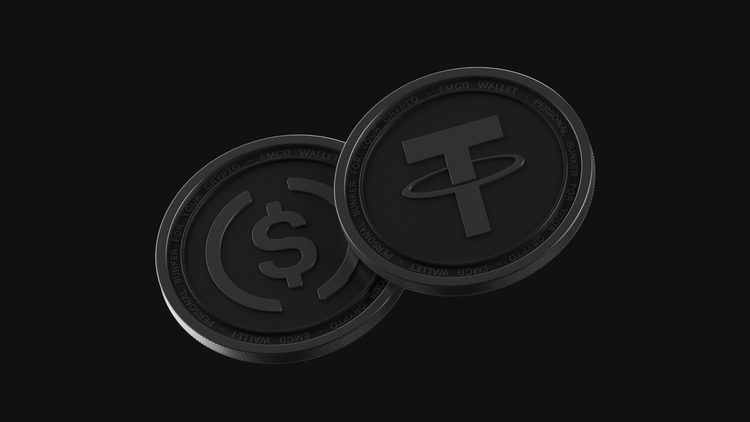Managing Crypto and Stablecoins: Strategies for Growth and Stability

Investing in cryptocurrency presents options for high growth, but it also comes with significant volatility. The key is finding crypto strategies that balance the potential for growth with measures to protect and stabilize your assets. This article explores how to achieve that balance by leveraging both crypto assets and stablecoins, providing a structured guide on strategies, risk management, and portfolio diversification.
Understanding the Role of Cryptocurrencies in a Portfolio
Cryptocurrencies like Bitcoin and Ethereum are known for their high return potential and have become a staple in many modern portfolios. They can be the growth engine of a financial plan, as their values may increase dramatically over time. Bitcoin’s long-term upward trend has rewarded early investors, and many invest in the broader crypto market for such outsized gains. However, crypto assets are extremely volatile, prices often swing wildly in the market due to changing demand, technology upgrades, or regulatory news. This volatility means that while cryptos offer substantial upside, they also carry significant loss risk. Any crypto strategy should acknowledge this risk and pair crypto holdings with stabilizing elements to protect capital. In other words, crypto assets are best used as part of a broader strategy that considers how to harness their growth potential while managing the downsides.
The Importance of Stablecoins for Risk Management
Stablecoins are a class of cryptocurrencies designed to maintain a stable value, typically by being pegged 1:1 to a reserve asset like the U.S. dollar. They aim to bridge the gap between the notorious volatility of crypto and the stability of traditional currency. In practice, stablecoins like USDT or USDC retain their value and provide a way to preserve capital. This makes stablecoins invaluable for risk management: an investor can quickly convert crypto into stablecoins to balance the portfolio and avoid major losses when markets fall. Stablecoins are also used as a unit of account in the crypto ecosystem; many trading pairs are denominated in stablecoins, making it easy to move into a stable asset between trades. Additionally, holding stablecoins allows investors to get started on gaining passive interest (through lending or staking programs) without exposing funds to price swings. In summary, incorporating stablecoins into your strategy is a prudent way to balance growth with stability, acting like cash or bonds would in a traditional portfolio.
Growth-Oriented Strategies with Cryptocurrencies
For the growth portion of your portfolio, there are several strategies focused on maximizing financial results from crypto assets. A common approach is long-term investing ( “HODLing”) in major cryptocurrencies like Bitcoin or Ethereum, under the belief that their value will rise over the long term. This is a relatively passive approach: you purchase and hold, riding out short-term volatility for potential large gains.
Another way to pursue growth is through active trading like short-term trading or swing trading: taking advantage of the crypto market’s 24/7 availability and price movements. Active crypto traders use technical analysis and set rules for entry/exit; they might employ strategies like momentum or breakout trading to capitalize on trends. More aggressive growth strategies include investing in altcoins that have high growth potential or participating in initial coin offerings (ICOs) and new project tokens. These can yield high financial results if you pick the best projects, but they carry higher risk. Additionally, decentralized finance (DeFi) offers reward farming options where you provide liquidity or stake volatile token pairs to get high rewards. Reward farming in speculative DeFi projects can offer very high annual percentage reward rates, but this approach is risky due to possible token price crashes or smart contract failures.
In essence, crypto strategies for growth embrace risk and volatility in pursuit of substantial financial results, and they require careful research and sometimes active management.
Examples of Growth Strategies
- Long-term holding. Buying and holding established coins like BTC or ETH for years, expecting their value to appreciate
- Active trading. Frequent buying/selling to capitalize on market fluctuations from market fluctuations, using methods like day trading or momentum trading (requires skill in analysis and risk control)
- Investing in altcoins. Diversifying into emerging cryptocurrencies or sectors like DeFi, metaverse tokens that might outperform the market
- DeFi farming strategies involving volatile tokens. Providing liquidity or staking in exchange for high reward rates. This strategy can generate high reward rates, but exposes you to farming risks like impermanent loss and token volatility
Stability-Oriented Strategies with Stablecoins
On the stability side of the equation, stablecoins shine as a tool for preserving value and gaining steady financial results. Simply holding stablecoins like USDC, USDT or others, ensures that portion of your portfolio won’t be affected by crypto market price swings. But beyond just sitting idle, there are ways to put stablecoins to work.
For example, many crypto exchanges and platforms offer interest-bearing accounts or lending programs for stablecoins, allowing you to grow your portfolio. Stablecoins can grow your balance over time through various methods like centralized lending programs, decentralized lending protocols, liquidity pools, staking, and reward farming on stablecoin pairs.
One popular way to use stablecoins is via lending or interest-earning platforms: fund your account with stablecoins and get regular interest payments. Some well-known exchanges and financial services offer this with flexible or fixed terms. Another approach is using DeFi lending protocols where you lend out stablecoins to borrowers and gain interest algorithmically. Providing liquidity to stablecoin pairs on decentralized exchanges is also common, since both sides of the pair are stable, the risk of impermanent loss is minimal, and you get a share of trading fees and incentives. Similarly, certain stablecoin staking programs or reward farming pools allow you to lock up stablecoins and get rewards in return.
Financial results on stablecoins can range from a few percent APY to double-digit reward rates. For example, Coinhold by EMCD is a crypto saving service that offers rewards up to X% annually (your financial result may vary depending on live crypto market dynamics) on USDT and USDC and up to 8% on BTC, ETH, LTC, BCH. This illustrates that stablecoins can provide income and growth while the same original capital remains stable in value.
Overall, integrating stablecoin-based strategies allows you to grow your portfolio over the time and buffer your portfolio against the volatility of the crypto market.
Examples of Stability Strategies
- Holding stablecoins as cash reserves. Keep a portion of your funds in stablecoins like USDC or USDT to protect against downturns
- Stablecoin interest accounts. Using centralized or decentralized platforms to gain interest on stablecoin holdings. Some crypto exchanges or services offer 5-10% APY on stablecoins, and specialized products like Coinhold can offer an option to gain even higher rates
- Stablecoin staking and farming. Staking stablecoins in protocols or providing liquidity in stablecoin pools to get rewards
- Using stablecoins for risk-off timing. Proactively converting some crypto into stablecoins when you anticipate a market drop
Diversification: Combining Crypto Assets and Stablecoins
A well-diversified crypto portfolio will include both high-growth assets and stable assets, each serving a purpose. By combining cryptocurrencies and stablecoins, you balance reward and risk. One basic principle is to decide what percentage of your portfolio to allocate to volatile crypto vs. stablecoins based on your risk tolerance and financial goals. For example, a more aggressive investor might hold 80% in crypto and 20% in stablecoins, whereas a conservative approach might be closer to 50/50. The idea is that the stablecoin portion acts as an anchor, when crypto prices fluctuate, the stablecoins remain constant, helping to stabilize the overall portfolio value.
Managing Volatility and Protecting Capital
Volatility is an inherent part of the crypto market, but investors have tools to manage it and protect their capital. One fundamental tactic is to use stablecoins as a hedge against volatility. During a steep market downturn, converting assets to stablecoins means you avoid further losses and preserve your capital’s value. Then, when conditions improve or prices stabilize, you can re-enter the market from that stable position. This ability to quickly move on the sidelines and back is one reason stablecoins are so useful for active risk management.
Apart from using stablecoins, other risk-management strategies include setting stop-loss orders on trades to automatically sell if an asset’s price falls to a certain point, which can prevent catastrophic losses. Diversifying across different cryptocurrencies also helps – while most coins tend to trend with the market, some may hold value better than others in certain conditions, and diversification reduces the impact of any one coin plummeting. For example, having a mix of established coins and some stable assets ensures that not all your holdings will behave the same way in a crash. If you hold assets in different sectors like mainstream coins, DeFi tokens, and NFTs their fortunes might not be perfectly correlated, further smoothing out volatility.
An often overlooked method to manage volatility is simply sizing your positions appropriately and not overexposing yourself. This means only investing an amount in crypto that you can afford to leave for the long term, so short-term swings don’t force you into panic selling. Keeping some cash or stablecoin reserves for emergencies or future options is also part of capital protection, it ensures you’re never forced to sell assets at a bad time just to raise cash.
Services like Coinhold make this process easier by offering an option to keep assets in stablecoins while still gaining reward rate.
Education and staying informed also protect you: understanding how different crypto assets react to market events can help you anticipate moves and adjust your strategy proactively. In summary, while you cannot eliminate volatility in crypto, you can employ tactics to mitigate its impact: mix in stablecoins to hedge, use tools like stop-losses, maintain a balanced portfolio, and remain disciplined with your financial plan.
Key Risks and How to Mitigate Them
Recognizing these risks is crucial to formulating a resilient financial strategy, and each risk has ways to mitigate it. There are some of the key risks in combining high-growth crypto assets with stablecoins, along with tips on how to manage them.
Volatility Risk
Cryptocurrencies are highly volatile; their prices can spike or crash unpredictably. A significant market drop can sharply reduce the value of your crypto holdings.
Mitigation: Limit the portion of your portfolio in extremely volatile assets and maintain some allocation to stablecoins which hold value during those swings. Diversifying across different crypto assets can also reduce the impact of one coin’s collapse on your overall portfolio. Using techniques like stop-loss orders for trades helps enforce discipline in cutting losses before they worsen.
Stablecoin Depeg Risk
While stablecoins aim to stay at $1, they are not infallible. Issues with the issuer or reserve assets can cause a stablecoin to lose its peg.
Mitigation: Use reputable, well-audited stablecoins. It can also help to diversify among a few stablecoins, for example, split funds between USDC and USDT, so that if one faces trouble, you don’t lose all your stable value. Keep an eye on news about the stablecoins you use, if confidence drops or regulatory changes occur, consider moving to a more protected option.
Counterparty Risk
If you lend out crypto or stablecoins, you rely on borrowers or the protocol’s smart contracts to repay as promised. A borrower default or a smart contract exploit could result in you not getting your funds back.
Mitigation: In CeFi lending, stick to reputable firms and note that in some jurisdictions, interest-bearing stablecoin accounts for retail have been restricted for consumer protection. In DeFi, diversifying across different lending pools and not chasing abnormally high reward rates without understanding the risks of extremely high rates can signal unsustainable or risky schemes. Some protocols offer insurance or there are third-party crypto insurance services; using those can provide an extra protection layer for your lending activities.
Liquidity Risk
Some holdings or platforms may lock your funds for a period or have low liquidity, meaning you can’t withdraw or sell assets quickly when needed. For example, if you stake in a fixed-term program or a small liquidity pool, exiting might take time or incur penalties.
Mitigation: Be aware of lock-up terms and prefer flexible arrangements if you might need quick access to funds. Keep a portion of your portfolio in readily accessible stablecoins or cash for emergencies. When providing liquidity in DeFi, consider major platforms that typically have deep liquidity. Avoid putting too much into very illiquid small-cap tokens which you might not be able to sell without slippage.
Regulatory Risk
The regulatory environment for crypto and stablecoins is evolving. New laws or rules like bans on certain crypto activities or requirements for stablecoin issuers, could affect your holdings or ability to use certain services.
Mitigation: Stay informed about regulatory developments in the country of your residence and globally. If the platform you use becomes illegal or heavily compliant, you may need to adjust quickly. Diversify across jurisdictions if possible, for instance, using decentralized services alongside compliant ones. Also, be mindful of tax implications of your crypto activities like short-term trading and gaining interest can create taxable events; plan and record everything so you don’t face compliance issues.
By acknowledging these risks and planning for them, you can greatly improve the stability of your crypto journey. Balancing growth and stability isn’t just about asset allocation; it’s also about risk management practices that protect your downside while still allowing upside.
Final Thoughts
Balancing high-growth crypto assets with stablecoins is a prudent approach for anyone looking to navigate the crypto market responsibly. There is no one-size-fits-all formula for the best balance; the right mix depends on your individual financial goals, risk tolerance, and holding period. However, the overarching principle is clear: the crypto portion of your portfolio drives potential growth, and the stablecoin portion provides stability, income, and flexibility. By using the two in tandem, you get the best of both worlds, upside potential without reckless exposure, and stability without completely foregoing growth.
Education should also be part of your strategy. The crypto space evolves rapidly – new holding options arise, and the risk landscape can shift (new regulations, different market cycles). Stay informed through reliable sources and be ready to adapt your plan. If you are ever unsure, start small. You can always increase your exposure as you get more comfortable. Keep in mind that earning options in crypto often come with trade-offs in risk, so always understand how rewards are generated. For long-term success, focus on consistent, sustainable strategies rather than chasing quick wins or fads.
FAQ
What are the main benefits of investing in stablecoins?
Stablecoins offer two key benefits: value preservation and liquidity. Because they are pegged to fiat currencies, stablecoins maintain a stable price and are largely shielded from the wild swings of the crypto market. This makes them ideal for protecting capital – you can park funds in a stablecoin to avoid volatility without fully cashing out of the crypto ecosystem.
How can I balance high-growth crypto assets with stablecoins?
Balancing high-growth assets with stablecoins comes down to asset allocation. You would decide what portion of your portfolio to allocate to volatile cryptos versus stablecoins. Essentially, you rebalance periodically: increase stablecoin holdings when the crypto side grows too fast, and deploy stablecoins into crypto when there are attractive options. This way you balance the growth potential of crypto with the steadiness of stable assets. It’s also a good practice to set rules for rebalancing, for instance, rebalancing if the crypto or stablecoin portion deviates by more than X% from your target, to maintain discipline.
Are stablecoins completely protected from volatility?
Stablecoins are designed to be stable in value relative to their peg, so in normal conditions they won’t fluctuate like Bitcoin or other coins, 1 unit stays around $1. This means they are in the same low-volatility category as holding actual cash. However, stablecoin protection depends on the peg stability. Reputable stablecoins like USDC or USDT are backed by reserves and have maintained their pegs with very small price variation. They are largely protected from market volatility. But stablecoins aren’t fully protected: there is a risk of a depeg event if something goes wrong.
What percentage of a portfolio should be in stablecoins?
There is no universal percentage that fits everyone, it depends on your individual circumstances and risk tolerance. A very conservative investor might keep a large portion (50% or more) in stablecoins to minimize volatility, using the remainder for crypto holdings. An aggressive investor with high risk tolerance might keep only 10% or less in stablecoins, aiming to maximize growth with crypto assets. Many moderate investors choose something like 20-30% in stable assets and 70-80% in cryptos, but again, how you invest is highly personal.
Can stablecoins help you grow your portfolio?
Yes, stablecoins can absolutely grow your balance over time. In fact, gaining a reward rate on stablecoins has become a popular strategy, especially as an alternative to keeping cash in a TradFi institution. There are multiple ways to get income on stablecoins. Many centralized crypto platforms offer interest-bearing accounts or lending programs where you fund your account with stablecoins and receive interest, often paid out daily or weekly. Decentralized Finance protocols also let you grow your holdings: you can lend your stablecoins on money-market platforms like Aave or Compound and gain interest from borrowers, or put them into liquidity pools on decentralized exchanges to get trading fees and rewards. Some newer stablecoins are reward-bearing by design, they automatically increase in quantity or value based on an underlying reward mechanism.
By choosing between flexible access to funds and fixed-term lockups of 30, 90, or 365 days, holders can balance liquidity with reward potential and match their strategy to their risk tolerance.
Platforms like Coinhold streamline the process with stablecoin interest options, available in both flexible and fixed terms. This gives holders the ability to preserve capital, select the term that fits their goals, and still generate predictable financial results, without the complexity or risks of managing DeFi protocols directly.
If approached prudently, stablecoin income strategies are a powerful way to make otherwise idle capital work, while maintaining the flexibility to reallocate into growth assets like Bitcoin or Ethereum when market conditions are favourable.
What are the biggest risks in combining crypto and stablecoins in one strategy?
When you combine crypto and stablecoins in a single strategy, the biggest risks include those inherent to each side and some arising from managing both. On the crypto side, the primary risk is market volatility, your crypto holdings could drop significantly in value. On the stablecoin side, a major risk is stablecoin failure. When using both, one risk is getting the balance wrong: for instance, being too heavily weighted in crypto can expose you to large losses, while being too heavily in stablecoins could mean you miss out on gains if the market rallies. How you manage that balance and invest is crucial.
Another risk is complacency, just because you have stablecoins doesn’t mean you can ignore the crypto part of your portfolio; you still need to monitor and possibly rebalance. If you engage in moving parts of the portfolio, you also face timing and execution risks, you might move to stablecoins at the wrong time and miss a big upswing, or you might jump back into crypto right before another drop. There are also technical and operational risks: juggling multiple asset types means you might use more platforms or wallets, which introduces more points of potential failure.




